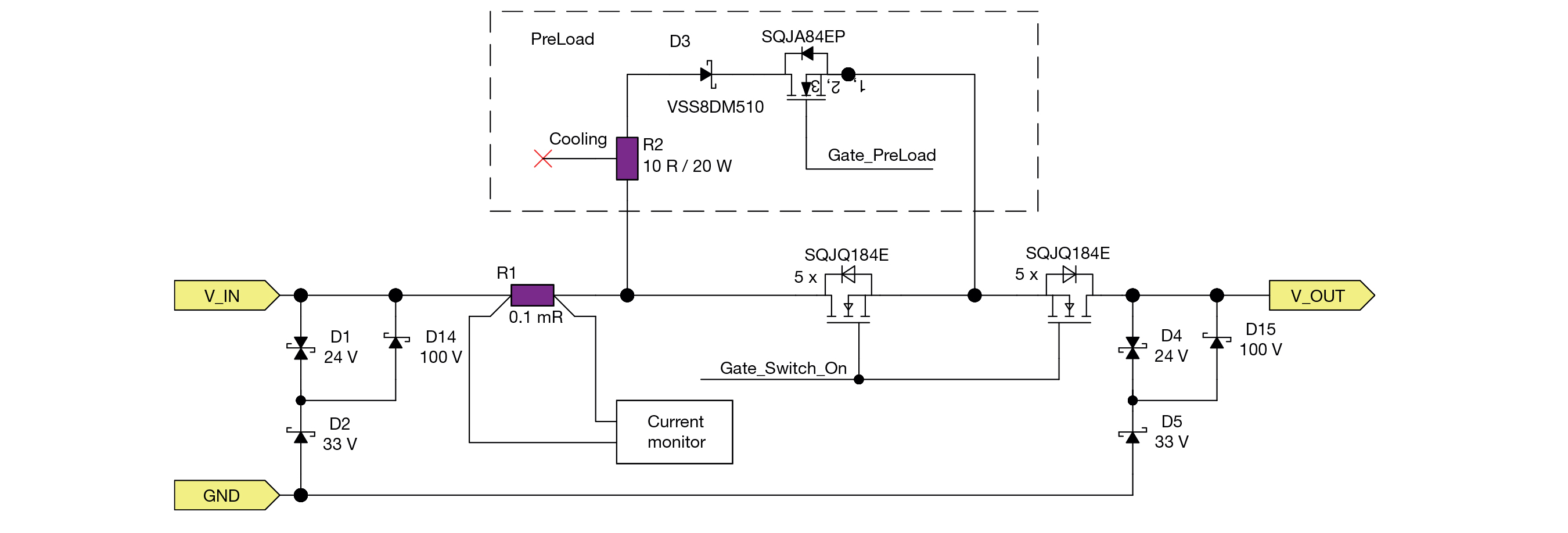An eFuse featuring TrenchFET® MOSFETs has been designed to handle continuous current up to 100 A. The eFuse design operates continuously at maximum current with less than 14 W of losses, without requiring active cooling. The design features a pre-charge function, continuous current monitoring, and overcurrent protection.
Reference Design Files

- EFUSE-48V100A
ZIP | Oct 18, 2023
Reference Board

- EFUSE-48V100A
Sep 17, 2025
Datasheet

- EFUSE-48V100A
PDF | Oct 27, 2023
An eFuse featuring TrenchFET® MOSFETs has been designed to handle continuous current up to 100 A. The eFuse design operates continuously at maximum current with less than 14 W of losses, without requiring active cooling. The design features a pre-charge function, continuous current monitoring, and overcurrent protection.
Reference Design Files

- EFUSE-48V100A
ZIP | Oct 18, 2023
Reference Board

- EFUSE-48V100A
Sep 17, 2025
Datasheet

- EFUSE-48V100A
PDF | Oct 27, 2023





















